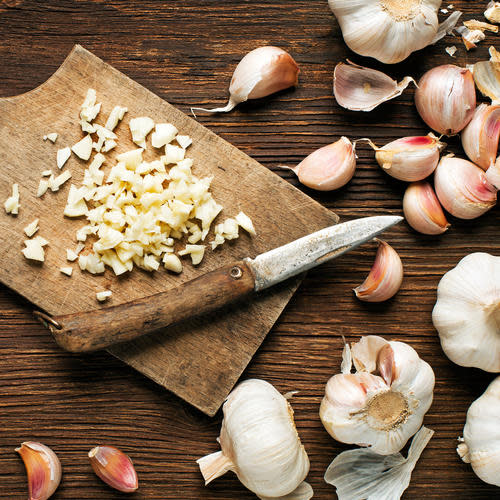Health Benefits of Raw Garlic

Touted for its antimicrobial and antioxidant activity, as well as its ability to improve immunity, and lower both blood pressure and cholesterol, garlic has become a staple in most every home cooks kitchen for good reason. Here we identity the active functional components of garlic, as well as the most effective ways to consume it.
Allicin is one of the primary phytochemicals in garlic that is considered to be the most biologically active. Garlic contains other substances that are now being studied for their anticancer effects, including allixin, allyl sulfides, quercetin, and organosulfur compounds.
In most cases, fresh herbs and spices contain higher levels of antioxidants than dried or processed products. Fresh garlic is no exception, as it is 1 1/2 times more powerful than dry garlic powder. When garlic is chopped or crushed, the allinase enzyme is activated which produces allicin from alliin (a derivative of the amino acid cysteine present in raw garlic). Because alliin and alliinase are stored in separate compartments of a garlic clove, only after crushing a clove does the process of forming allicin start. To maximize garlic's benefits, crush or chop the garlic and allow it to sit for 10 to 15 minutes before using it.
Many studies have revealed that the functional components of garlic can be severely diminished, if not lost completely, upon heating. The negative influence of heating is related to the activity suppression of the enzyme alliinase. One study, in particular, showed that as little as 60 seconds of microwave heating or 45 minutes of oven heating could block some of garlic’s potent antioxidant activity. However, allowing crushed garlic to stand for 10 minutes before heating showed some reservation of functional activity.
Bottom Line:
To reap the most benefits of garlic, try shaving raw cloves into salad dressings or adding it towards the very end of cooking.